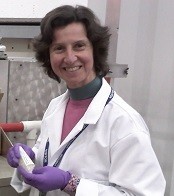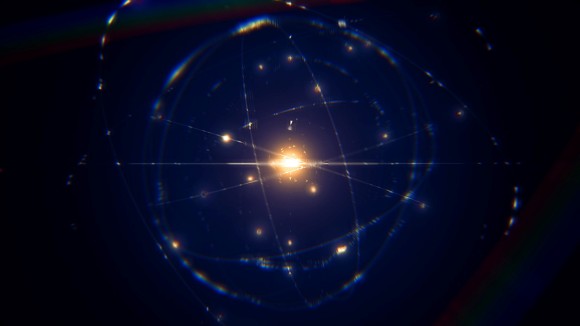Dustin A. Gilbert, PhD, University of Tennessee, USA
Dustin A. Gilbert is an Assistant Professor in Materials Science and Engineering at the University of Tennessee.  His research focuses on magnetic materials and magnetic phenomenon, including non-colinear spin textures, high-entropy materials, and proximity effects. Gilbert spent four-years at the NIST Center for Neutron Research in the mesoscopic structures group and continues to use neutrons at NCNR and ORNL as part of his current research. Dr Gilbert has been an Editorial Board Member for Scientific Reports since 2023.
His research focuses on magnetic materials and magnetic phenomenon, including non-colinear spin textures, high-entropy materials, and proximity effects. Gilbert spent four-years at the NIST Center for Neutron Research in the mesoscopic structures group and continues to use neutrons at NCNR and ORNL as part of his current research. Dr Gilbert has been an Editorial Board Member for Scientific Reports since 2023.
Maria Paula Matos Marques, PhD, University of Coimbra, Portugal
Maria Paula M. Marques is an Associate Professor at the Dep. Life Sciences/Univ. Coimbra,  and Assistant-Coordinator of the R&D Group “Molecular Physical-Chemistry”, Portugal. Her research interests include design of Pt/Pd-anticancer agents, cancer diagnosis by vibrational spectroscopy, characterisation of burned human bones, food products/nutraceuticals. Vibrational spectroscopy is the main methodology, including synchrotron-based (FTIR and EXAFS) and neutron scattering techniques. Dr Marques has been an Editorial Board Member for Scientific Reports since 2022.
and Assistant-Coordinator of the R&D Group “Molecular Physical-Chemistry”, Portugal. Her research interests include design of Pt/Pd-anticancer agents, cancer diagnosis by vibrational spectroscopy, characterisation of burned human bones, food products/nutraceuticals. Vibrational spectroscopy is the main methodology, including synchrotron-based (FTIR and EXAFS) and neutron scattering techniques. Dr Marques has been an Editorial Board Member for Scientific Reports since 2022.
Milan K. Sanyal, PhD, Saha Institute of Nuclear Physics, India
Milan K. Sanyal is an Emeritus Professor and Former Director at Saha Institute of Nuclear, India.  He works in the field of synchrotron x-ray and neutron scattering studies of surface and interfaces. His primary research interest is to develop understanding of growth-mechanism and structure-property relationship in low-dimensional materials like quantum-dots, nanowires, ultra-thin films and two-dimensional magnetic structures. Prof Sanyal has been an Editorial Board Member for Scientific Reports since 2015.
He works in the field of synchrotron x-ray and neutron scattering studies of surface and interfaces. His primary research interest is to develop understanding of growth-mechanism and structure-property relationship in low-dimensional materials like quantum-dots, nanowires, ultra-thin films and two-dimensional magnetic structures. Prof Sanyal has been an Editorial Board Member for Scientific Reports since 2015.
Markus Strobl, PhD, Paul Scherrer Institut, Switzerland; Niels Bohr Institute, University of Copenhagen, Denmark
Markus Strobl is Group Leader in the Laboratory of Neutron Scattering and Imaging at the  Paul Scherrer Institut in Switzerland and an Adjunct Professor at the Niels Bohr Institute of the University of Denmark. His work focusses on neutron instrumentation and the application of neutron science, in particular neutron imaging and diffraction, in applied materials research. He constantly works on extending the suite of methods using neutrons as a probe to investigate the structure and evolution of condensed matter in the context of a wide range of applications. Prof Markus Strobl has been an Editorial Board Member for Scientific Reports since 2015.
Paul Scherrer Institut in Switzerland and an Adjunct Professor at the Niels Bohr Institute of the University of Denmark. His work focusses on neutron instrumentation and the application of neutron science, in particular neutron imaging and diffraction, in applied materials research. He constantly works on extending the suite of methods using neutrons as a probe to investigate the structure and evolution of condensed matter in the context of a wide range of applications. Prof Markus Strobl has been an Editorial Board Member for Scientific Reports since 2015.

